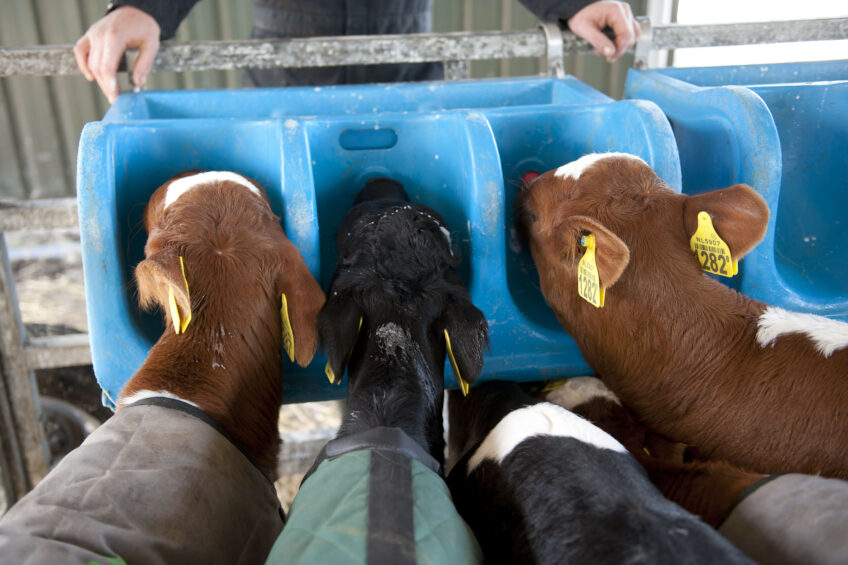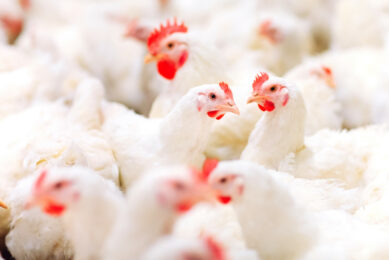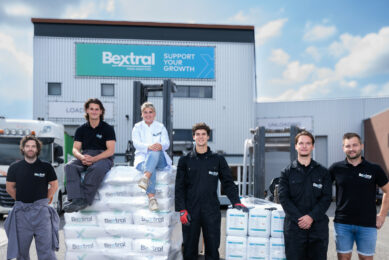Disease prevention: 4 keys points for feed and hygiene

Raising new calves is challenging. But by ensuring a great start in the first weeks, dairy farmers set the stage for growth and performance.
“Healthy calves in the first part of life may become less exposed to setbacks and health challenges later in life, which can result in optimal growth and lower management expenses,” says Julian (Skip) Olson, DVM, technical services manager for Milk Products. Here are 4 key points to help your calves thrive:
 Support early health
Support early health
Nutrition plays a significant role in early calf health. Supplements are available to help you keep your calves feeling and performing at their best. “Whether you feed your calves whole milk or milk replacer, consider an additive that optimises early calf health,” says Mr Olson. “Look for one that delivers a source of live naturally occurring microorganisms. Beneficial bacteria have been shown to help maintain normal intestinal microflora and optimise digestion.” Dried maternal colostrum can also help support calf intestinal health in the early stages of life. Some supplements will contain dried colostrum in addition to other beneficial ingredients. “Including maternal colostrum beyond day one has been shown to help support digestive system health and immunity, resulting in optimal calf growth and overall health,” says Mr Olson. “In addition to immunoglobulin G (IgG), colostrum supplementation provides many more substances that are of value to the calf: immunoglobulins and immunity-enhancing molecules, as well as vitamins, minerals, growth factors and hormones.”
 Keep feeding equipment clean
Keep feeding equipment clean
Sanitation and maintenance of feeding equipment are also important for your calf’s health. If not regularly washed and sanitised, equipment can quickly become a harbour for bacteria.
Cleaning tips include:
- Always use a separate bottle or pail for each calf,
- Wash pails, bottles and nipples in hot, soapy water and rinse well after each feeding,
- Allow equipment to dry thoroughly between feedings. Moisture can create an ideal breeding ground for bacteria. If drying conditions are poor, consider drying the equipment with a clean towel and
- Sanitise before use with an approved disinfectant. For example, chlorine dioxide is an effective sanitiser at a low concentration.
 Provide proper housing
Provide proper housing
When it comes to housing, with some advanced preparation and supplies, you’ll be set to give new calves a strong start.
Several guidelines need to be kept in mind:
- House calves in individual housing until weaning for the best chance of controlling disease spread from calf to calf,
- Ensure adequate ventilation without direct drafts,
- Provide and maintain a thick layer (6 to 10 inches) of clean, dry bedding of straw or shavings so the calf can easily nest into the bedding,
- Prevent nose-to-nose contact and
- Disinfect hutches or stalls thoroughly between calves.
 Stay ahead of health challenges
Stay ahead of health challenges
Part of raising calves is always looking ahead and trying to prevent stressful situations.
“As a calf raiser, part of your role is to pay close attention to temperature shifts, extreme heat or cold, vaccination, transportation or weaning. These are all factors that can cause calves to experience stressful situations resulting in health challenges such as scours,” says Mr Olson. “Feeding an electrolyte supplement ahead of these situations to avoid dehydration can help keep calves thriving.”
Join 13,000+ subscribers
Subscribe to our newsletter to stay updated about all the need-to-know content in the dairy sector, two times a week.











